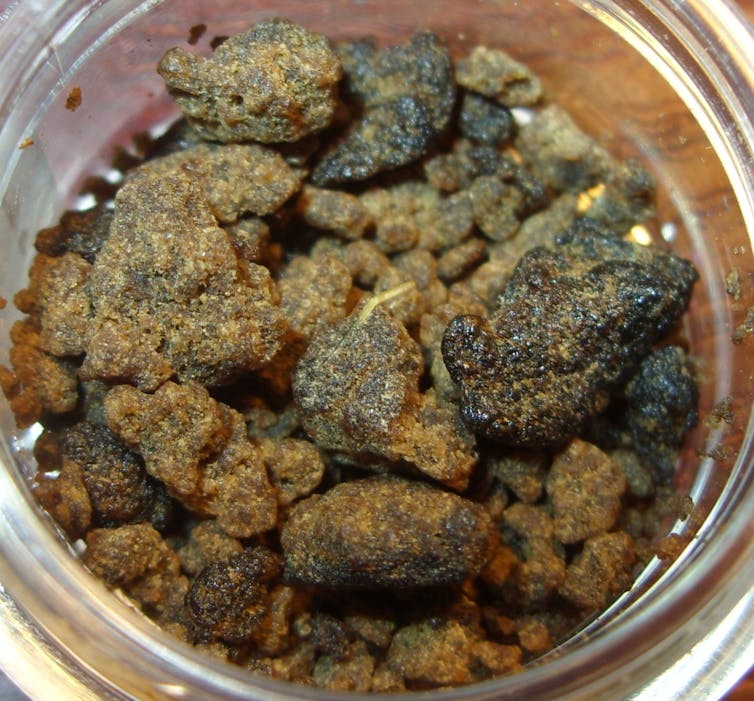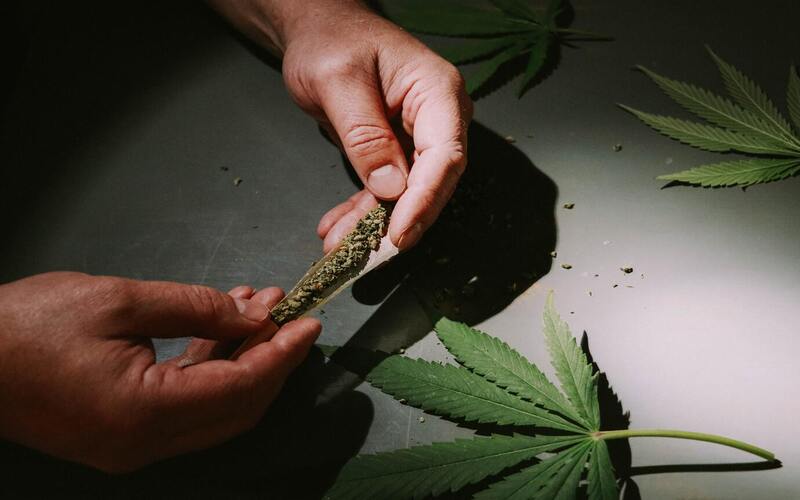In recent years, France has come closer to ending its national prohibition of cannabis, which has been in place since 1970.
The rise of “CBD cafés,” the growing public calls for an end to drug prohibition and an ongoing medical marijuana pilot program signal that, in the near future, France – the European Union’s leading cannabis-consuming member state – may legalize cannabis.
But as a scholar of the centuries-old links between cannabis and colonialism, I know that the movement to legalize the drug has largely ignored the groups most impacted by France’s historical war on drugs, which, as in the U.S., has disproportionately targeted ethnic and religious minorities.
France’s hidden war on drugs
Evidence suggests that cannabis prohibition over the past 50 years has disproportionately punished France’s Muslim minority.
About one-fifth of current French prisoners were convicted for drug offenses, according to the French Ministry of Justice – a rate comparable to that of the United States. Nearly all of them are men.
There is no demographic breakdown of this population, because the French credo of “absolute equality” among citizens has made it illegal since 1978 to collect statistics based on race, ethnicity or religion. But sociologist Farhad Khosrokhavar, who studies France’s prison system, has found that roughly half of the 69,000 people incarcerated today in France are Muslims of Arab descent.
Muslims make up just 9% of France’s 67 million people.
According to a January 2018 study commissioned by the French National Assembly, of the 117,421 arrests for drugs in France in 2010, 86% involved cannabis. Cannabis arrests are rising quickly, too. The same study reported that the number of people arrested annually for “simple use” of cannabis in France increased tenfold between 2000 and 2015, from 14,501 to 139,683.
Taken together, this and other data suggests that up to 1 in 6 prisoners in France today may be an Arab Muslim man who used, possessed or sold cannabis.
Hashish assassins
The disproportionate impact of French drug laws on Muslim men is unsurprising considering the French have long associated Muslims with cannabis – specifically hashish, a cannabis resin.
As I argue in my book, “Taming Cannabis: Drugs and Empire in 19th-Century France,” the 19th-century French believed this mild drug caused insanity, violence and criminality among Muslim North Africans.
Writing in the early 1800s, the famed French scholar Antoine-Isaac Silvestre de Sacy popularized the idea that the word “assassin” was derived from the Arabic word “hashish” and that both originated with a Muslim sect called the Assassins of Alamut, which operated during the Crusades.
First described in the 1300 Italian travelogue “The Travels of Marco Polo,” the Assassins of Alamut were rumored to use an “intoxicating potion” to dupe devotees in Iraq and Syria into becoming assassins. Sacy believed the potion was made from hashish, citing contemporary Arabic references to the sect as the “al-Hashishiyya,” or “hashish-eaters.”
These assassins, Sacy argued, “were specifically raised to kill” by their leader, known as the Old Man of the Mountain. They were fed hashish to ensure “absolute resignation to the will of their leader.”
Though largely a fiction, Sacy’s contentions about cannabis-eating Muslim assassins gained traction in France, particularly in medicine.

In the mid-19th century, dozens of doctors cited Sacy’s work in their research. They believed that Western pharmaceutical science could “tame” hashish for use by physicians to treat diseases including insanity, plague and cholera.
Medical hashish, primarily in the form of a tincture, flourished in France during the 1830s and 1840s.
But the French soon grew disillusioned with their wonder drug. Cannabis, we now know, eases the symptoms of some diseases, but it did not cure cholera, one of the most feared diseases of the 19th century.
As failed treatments mounted and many of the medical philosophies that underpinned the use of hashish became obsolete in France by the late 19th century, its use as medicine largely ended. In 1953, France made medicinal hashish illegal.
Colonial reefer madness
The link between hashish and violent Muslims, however, was ingrained in the national consciousness. And it influenced French public policy for decades.
Officials and physicians in French colonial Algeria, viewing hashish use as a cause of insanity and violent criminality, filled psychiatric hospitals across Algeria with local Muslims supposedly suffering “folie haschischique” – basically, “reefer madness.”
Such thinking also helped justify the creation of the Code de l’Indigènat in 1875, a French law that institutionalized racism and apartheid in French North Africa by officially designating Muslims as subjects rather than citizens.
In the name of promoting “colonial order,” France established separate and unequal legal codes that promoted the segregation, forced labor and civil rights restrictions of Muslims and other Africans.
The stigmatizing association between Muslims, hashish and criminality persisted after the end of the French Empire in 1968. It followed North Africans who emigrated to France, who were believed to be prone to violence and criminality and, as such, subject to government surveillance, interrogation and excessive police force.
French parliamentarians seeking to criminalize cannabis in the late 1960s embraced these discriminatory views.
They described the nation’s growing drug problem as a “foreign plague” spread by Arab drug traffickers. One French National Assembly member even cited Sacy, reminding fellow lawmakers that cannabis had supposedly once inspired a cult of Muslim murderers called the “Hachichins.”
French lawmakers today probably would not use such discredited research or stigmatizing language to connect Muslims to cannabis. But the number of Muslims imprisoned for drug-related crimes suggests that this historic racism is alive and well in France.
If France moves to regulate legal cannabis, many doctors, pot smokers and libertarian economists will surely rejoice. But it may be French Muslims who benefit the most.
This is an updated version of a piece that was published on August 7, 2019.
This article is republished from The Conversation under a Creative Commons license. Read the original article.






